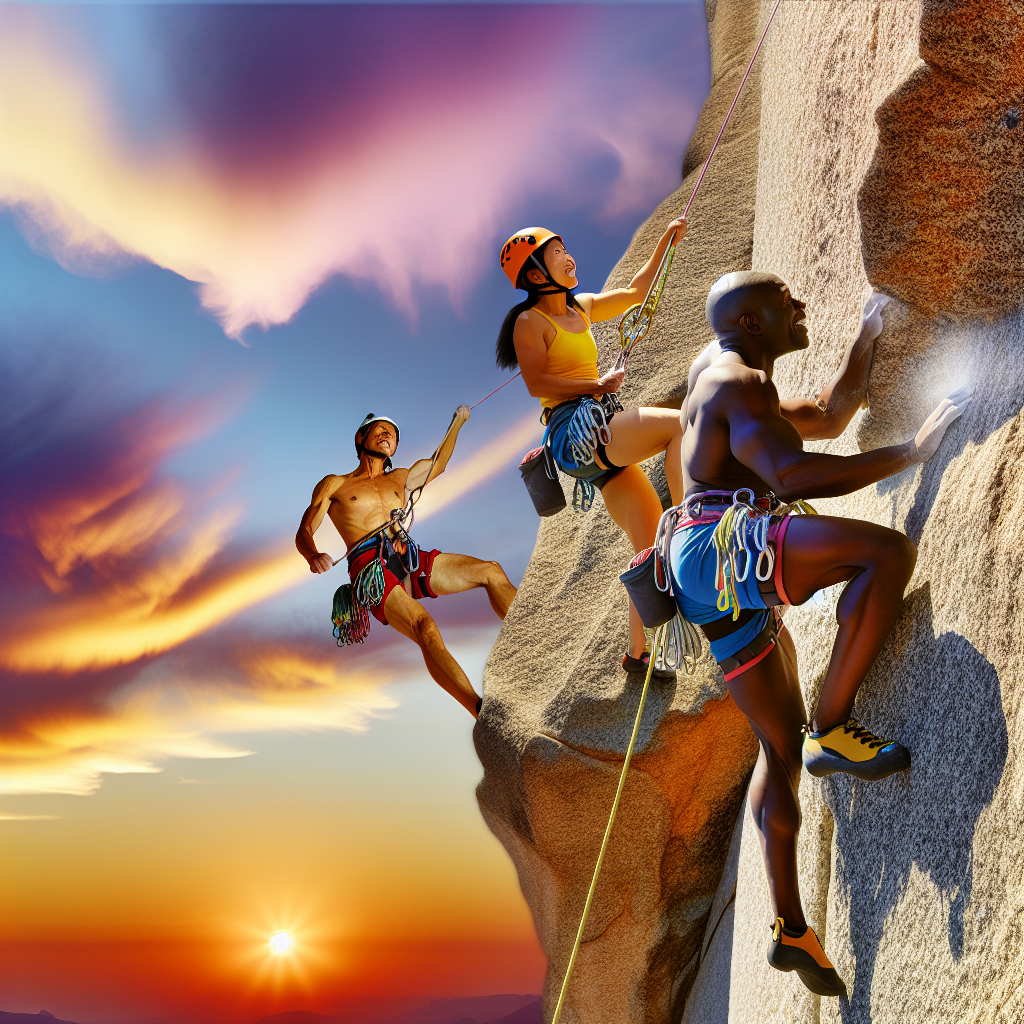Essential Climbing Gear
Understanding Climbing Shoes
Climbing shoes are arguably the most critical piece of gear for any climber. The right pair can make a significant difference in your performance. When selecting climbing shoes, consider the fit, material, and type of climbing you'll be doing. Shoes should fit snugly to ensure optimal performance, but they shouldn't cause pain. A well-fitted shoe helps enhance your footwork, crucial for both sport and trad climbing. Different types of climbing shoes are designed for specific activities. For instance, aggressive shoes are great for sport climbing due to their downturned shape, while moderate shoes provide comfort for long trad routes. Understanding these differences is essential for selecting the right pair for your climbing style. Additionally, care for your climbing shoes is vital. Regularly clean them, avoid walking on rough surfaces, and store them properly to prolong their lifespan. A well-maintained pair will serve you better and enhance your climbing experience.

Harness Essentials
A climbing harness is your lifeline when climbing. It connects you to your rope and keeps you secure during ascents and descents. When choosing a harness, look for comfort, adjustability, and weight. A well-fitted harness allows you to move freely while providing the necessary support. There are different types of harnesses available, including sport climbing harnesses, trad harnesses, and alpine harnesses. Each is designed for specific climbing disciplines and conditions. For instance, a lightweight alpine harness is perfect for multi-pitch climbs where weight is crucial, while a more robust sport harness offers additional padding for comfort during prolonged climbs. Additionally, learning how to properly put on and adjust your harness is essential. Always double-check your harness before climbing to ensure it fits snugly and securely. Understanding how to tie in correctly is a fundamental skill every climber must master.

Ropes and Protection
Ropes are a critical component of climbing safety. They come in various types, including dynamic and static ropes. Dynamic ropes are designed to stretch, absorbing the energy of a fall, making them essential for sport climbing. Static ropes, on the other hand, are used for rappelling and hauling gear. Understanding how to choose the right rope for your climbing style and environment is essential. Factors such as length, diameter, and dry treatment can influence your choice. Additionally, knowing how to care for your rope is crucial for maintaining its integrity. Avoid exposing your rope to sharp edges and always store it in a cool, dry place. Protection devices, such as carabiners, quickdraws, and nuts, are also vital for securing yourself during climbs. Learning how to place and clip protection correctly is a fundamental skill that will enhance your climbing safety and confidence.
